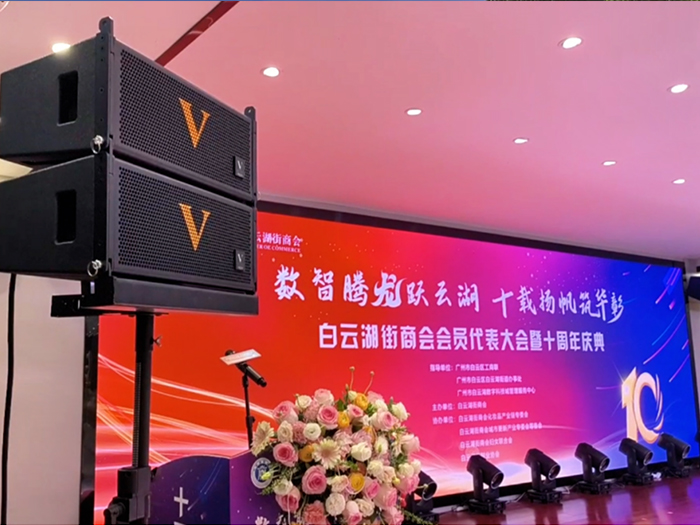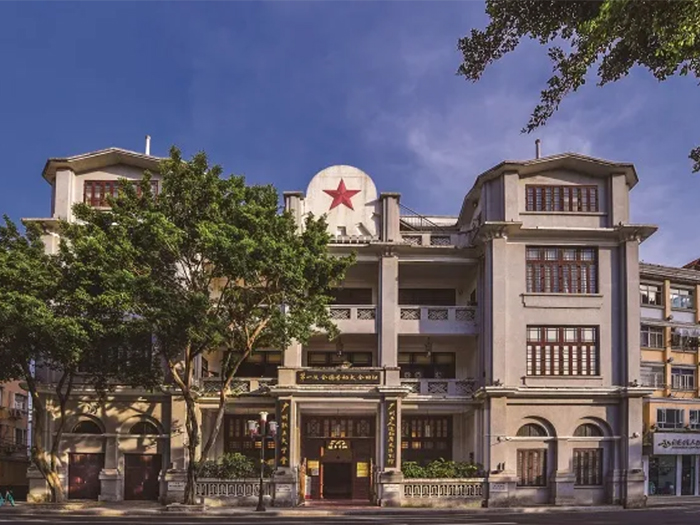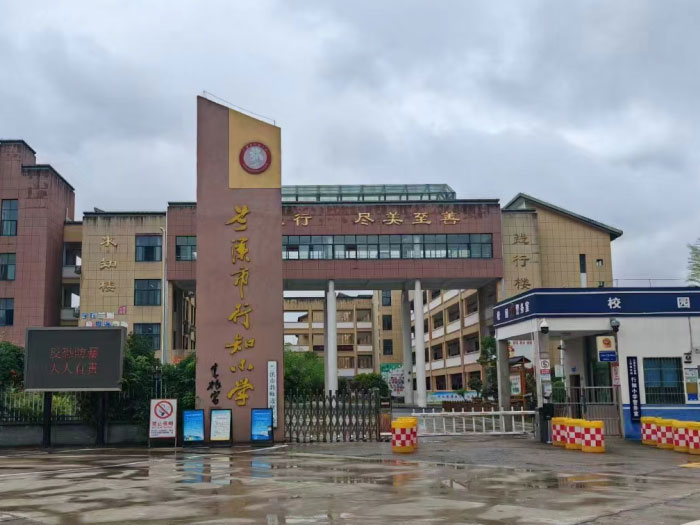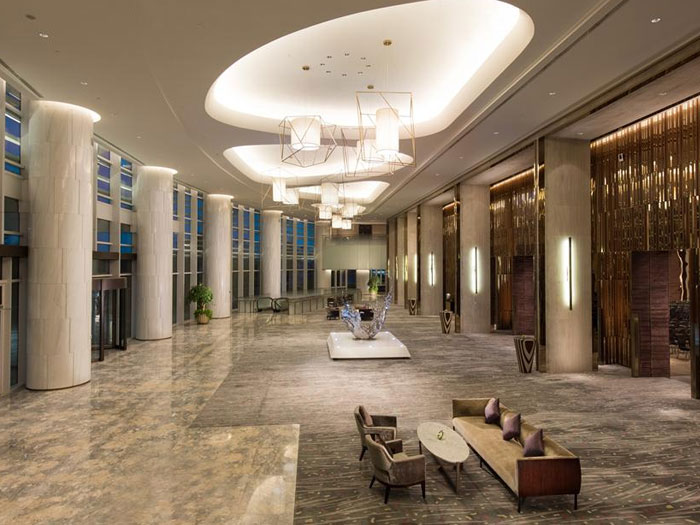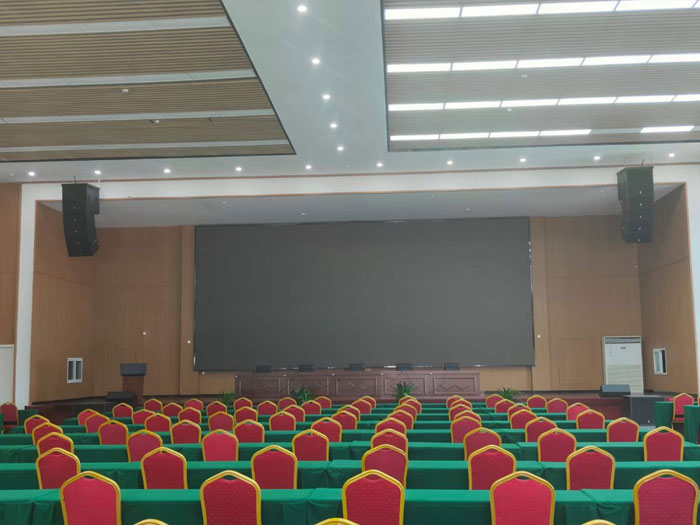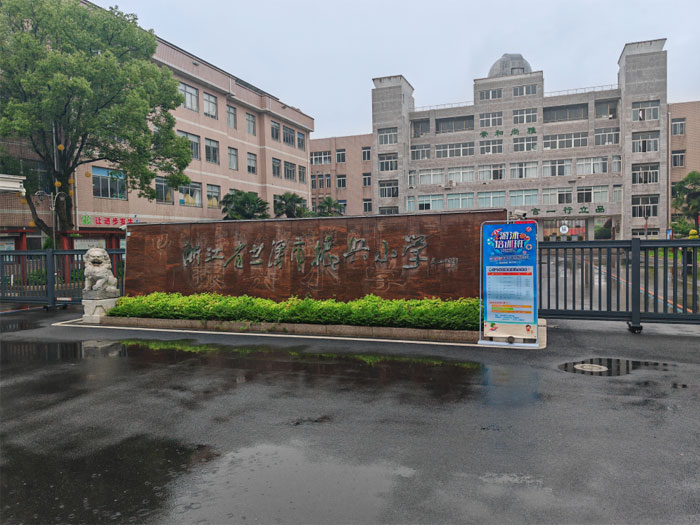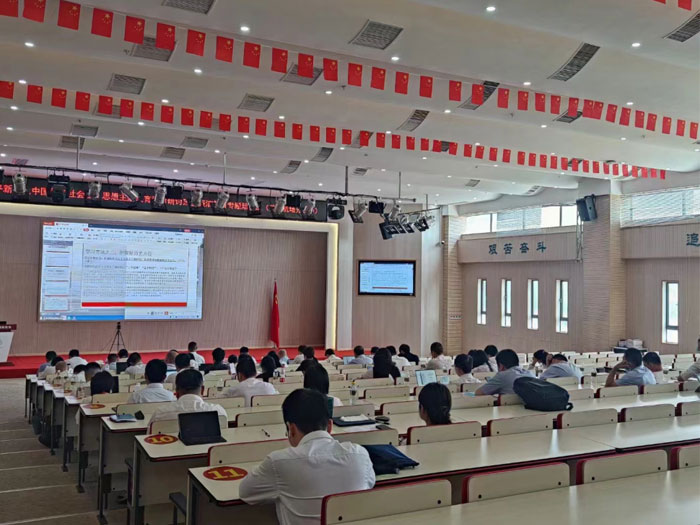Conference Hall
06-03-2024 Views:419 Times
I. Introduction
A modern conference room should not only meet the traditional conference design requirements but also have high-quality audio-visual effects, clear video presentations, and be able to reflect its integrated control simplicity and efficient meeting purposes. It truly realizes the seamless connection between the digital conference system and the central control system and integrates multiple subsystems including the sound reinforcement system, conference discussion system, automatic tracking camera system, and multimedia video system. Under the control of the wireless touch screen on the podium, the above subsystems and the entire conference environment are organically combined into a whole through the central integrated control system, achieving intelligent management of the conference.
II. Overall System Design
An intelligent multimedia conference hall usually needs to be equipped with multiple subsystems such as audio (including sound pickup, playback, signal processing, recording, etc.), video, multimedia, centralized control, communication, computer network, and lighting. It is actually an application requirement of "system integration" (SystemsIntegration - SI) - how to connect subsystems with different functions physically, logically, and functionally to achieve information integration and resource sharing. Make the system fully meet the various functions required by users and reach the various indicators (normative) of relevant national (or industry) standards, and have advancedness, forward-looking, scalability, and a high performance-price ratio. The specific requirements of modern multimedia conferences


Different user units may have different requirements and focuses on the functions that the multimedia conference hall should have. If divided by the focus of functions, the common ones currently can be roughly divided into one type that mainly focuses on conference functions, including seminars, speeches, lectures, reports, plus artistic performances on the podium, mass cultural and entertainment activities, and projection playback. Such conference halls usually have fixed audience seats, and some are also equipped with conference tables or movable "small tabletops", and the ground is often made into steps to obtain better visual and auditory effects. Such conference halls are often found in government agencies, convention and exhibition centers, troops, schools, and scientific research institutions. Another type of conference hall, in addition to the above functions, also includes functions such as banquets, catering, dances, professional performances, and holding various exhibition activities. The audience seats are mostly in a movable form and can be flexibly placed or even removed according to different activity contents. The ground is usually flat. Such multi-functional halls are often found in hotels, factories, enterprises, and institutions.
III. Acoustic Design
Through the analysis of the layout environment of the conference room, the reasonable arrangement and connection of audio equipment, and the installation of audio equipment, the sound source and the end of the audio system - the audio can be in the same sound field area, so that the audience can feel the real existence of the sound source and meet the requirements of high-fidelity playback sound reinforcement. And achieve that the audio of the multi-functional conference room is mainly natural sound, requiring good diffusivity, uniform sound field distribution, appropriate loudness, and good naturalness. In the conference system, the sound reinforcement system can be used to increase the sound pressure level and clarity of the sound source in the audience seats. Through electro-acoustic design, the sound quality of the conference room is controlled and improved, achieving the purpose of conference sound amplification: increasing the loudness and uniformity of the sound field distribution, improving the sound quality of the conference and enhancing the audio effect. Through the analysis of the conference room environment, the speaker equipment is selected, and the layout of the audio equipment is carefully designed. In addition to meeting the purposes of high loudness, uniform sound field distribution, improving the sound quality of the conference room and enhancing the audio effect, the conference system must also meet the basic requirements of acoustic index design:
IV. Electrical and Safety Design
[International IEC General Standard] GBJ232-82 of the People's Republic of China
[Standard Specifications for Construction and Acceptance of Electrical Installation Engineering] GBJ300-8 of the People's Republic of China
[Unified Standard for Quality Inspection and Evaluation of Construction Installation Projects] National Standard of the People's Republic of China - GB50055-9
[Design Specification for Power Distribution of General Electrical Equipment] National Standard of the People's Republic of China - GB50052
Pipeline and Line Laying Instructions:
High-quality cables are used for the speaker cables and are designed and adopted according to the length and thread calculation formula to reduce power loss.
The speaker plugs are all wire clamp type at the fixed points.
The microphone cables are transmitted in a double-strand balanced manner to reduce noise.
The embedded microphone cables are all double-shielded to isolate interference.
The detailed design of the relevant lines and pipelines will be carried out in the deepening design of the audio system.
Installation Process Instructions for Speakers:
The load-bearing of all hoisted and wall-mounted speakers is designed and certified by the architectural design department to ensure long-term use.
The hoisting steel structure and load-bearing components of all speakers adopt the finished product integral powder spraying technology plus anti-rust paint and marine topcoat for anti-corrosion and rust prevention treatment, and all fasteners are made of high-quality stainless steel or galvanized products to ensure the safety of long-term and reliable use.
Power Supply and Grounding System:
(1) The control room requires the owner to provide an independent secondary power supply to reduce the noise interference of the power supply.
(2) The power supply of the audio system must adopt an independent grounding system, and the standard is implemented in accordance with the relevant "Installation Code for Low-Voltage Power Distribution Devices" of the country.
V. Preparatory Work Before Construction
Determine the direction and position of the wiring and communicate with the on-site construction personnel.
Transport the materials prepared in advance to the site and designate a special person to manage them, and check the list of materials.
Prepare all kinds of construction machinery and equipment used in the construction process and designate a special person to manage them.
VI. Precautions During Construction
The person in charge of the construction site should be serious and responsible and deal with various situations that arise during the construction process in a timely manner. Coordinate and handle the opinions of all parties.
If unforeseen problems are encountered during the on-site construction, it should be reported to the engineering unit in a timely manner and propose solutions for the engineering unit to solve on the spot to avoid affecting the construction progress.
Problems caused by the inadequate planning of the engineering unit should be solved in a timely manner.
New points added by the engineering unit should be reflected in the construction drawings in a timely manner.
Periodic inspection and acceptance should be carried out for some sites or sections to ensure the project quality.
VII. Precautions at the End of Construction
Clean up the site to keep it clean and beautiful.
Repair the such as wall holes and shafts.
Summarize all kinds of remaining materials, and place the remaining materials in one place and register the quantity that can still be used; return them to the supplier.
Take an inventory of the construction machinery and equipment used.
VIII. On-site Management System
Relevant personnel entering the construction site (including construction personnel, management personnel, and technical personnel) must wear safety helmets and carry work cards.
Pay attention to the environmental hygiene of the construction site. Smoking and using fire are strictly prohibited at the construction site, and spitting is not allowed.
The construction site must be planned in accordance with the layout plan determined by the owner.
Machinery, equipment, and materials should be installed or stacked at the designated location. Materials should be classified and registered and received according to procedures.
The construction waste should be cleaned up in a timely manner. One layer should be cleaned up after one layer to ensure that the work is completed and the site is cleared. Keep the site tidy, clean, and the road unobstructed.
All construction personnel entering the construction site must consciously abide by the regulations on site appearance management and the regulations of relevant departments, abide by various rules and regulations, dress neatly, and correctly use various labor protection supplies. Work in unity and help each other.
The construction site must have strict piecemeal subcontracting and personal post responsibility systems.
Construction personnel are not allowed to fight, drink alcohol, or play during the construction period.
The deputy project manager is responsible for inspecting and supervising the civilized and hygienic conditions of the construction site and assessing the construction personnel according to the technical organization measures for civilized construction.
IX. Conclusion
Our company will be responsible for training the users of Party A, including:
Conduct system and product training before construction so that they have a detailed understanding of the system products.
Conduct installation training during the construction process to be able to independently install and maintain the system.
Conduct application training after the project is completed so that they can skillfully master the use of the system software and hardware in various application environments.
Application Cases
Audio and Video System Solution | Application Case of Baiyun Lake Street Chamber of Commerce Building
12-30-2024
Application Case of Professional Sound System at the Site of the First National Labor Congress
12-18-2024
Lanzhou Zhixing Primary School Lecture Hall
07-14-2024
Kempinski Banquet Hall Loudspeaker System
07-14-2024
Yangkou Town Chemical Hall, Nantong, Jiangsu
07-14-2024
Zhejiang Lanxi Zhenxing Primary School Multi functional Lecture Hall
07-14-2024
Haikou Meilan Airport Lecture Hall
07-14-2024
Multi functional banquet hall in Korea
07-14-2024
Shenzhen Yiduoduo Multi functional Conference Room
07-14-2024
Rudong County People's Procuratorate's Sound Reinforcement System
07-14-2024
Renovation Case of Government Unit Conference Room Report Hall in Shimen Street Office, Baiyun District, Guangzhou City
07-09-2024
